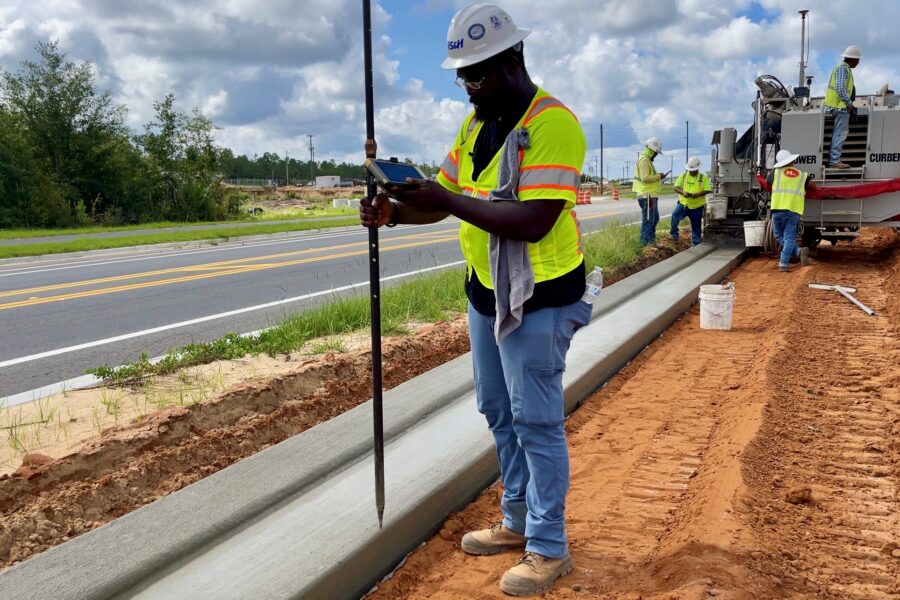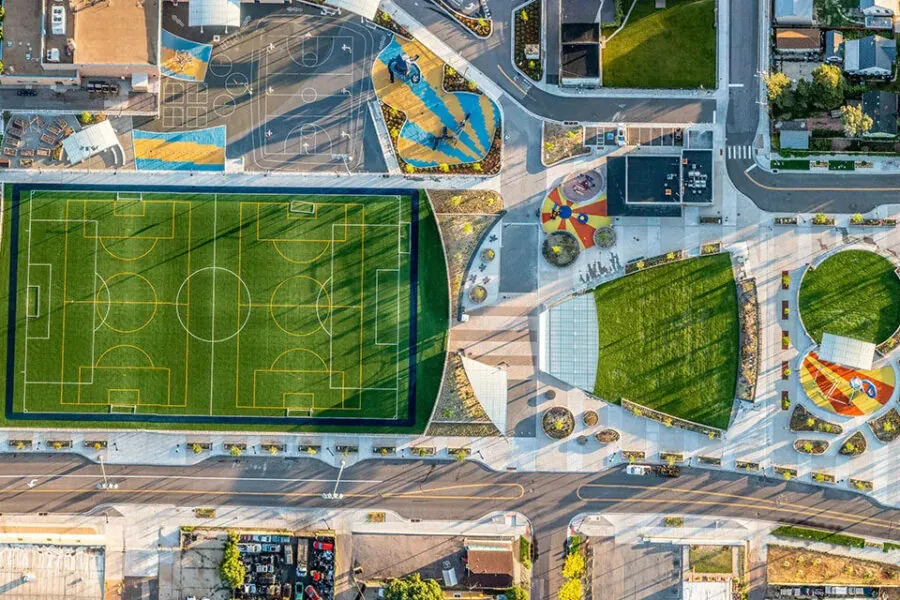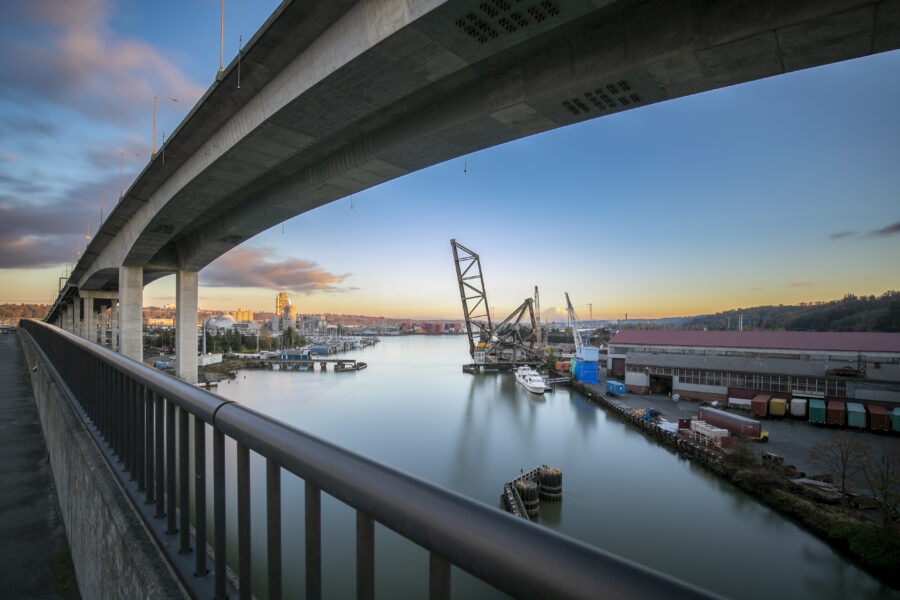Q&A with Lisa Robert: Emerging Trends in Infrastructure

We are amid a rapidly growing and incredibly transformational time in the business of infrastructure. Broadly speaking, infrastructure is seeing a major revival across the country and the impacts of this are fixing years of delayed projects with new initiatives.
Today, our Chief Operations Officer, Lisa Robert is answering a handful of questions about emerging infrastructure trends, challenges and more.
- What are two or three emerging trends in civil infrastructure?
- What are your thoughts on sustainable funding for transportation in the future?
- What changes are you seeing from State DOTs and local governments regarding roadway safety?
- What is the role of sustainability and resilience in infrastructure?
- What changes do you see coming to the AEC community over the next 10 years that excite you most?
- Similarly, what do you see as the greatest challenges for the AEC community over the same 10-year time span?
- What thoughts do you have for addressing workforce issues that the AEC industry faces today and into the future?
What are two or three emerging trends in civil infrastructure?
I see several new and emerging infrastructure trends that all fall within three major categories of infrastructure: funding, safety and resilience.
Regarding funding, the Infrastructure Investment and Jobs Act (IIJA) has resulted in increased and more flexible funding streams. All modes of transportation and infrastructure are receiving more long term and sustainable funding and states and localities are prioritizing projects to advance broad policy goals such as safety, equity, resilience, performance management, greenhouse gas reduction and broadband deployment.
The private sector is helping deliver projects better and faster while bringing investments to help capitalize on the increased funding levels with new capital investments and delivery methods. For example, at RS&H, we partner with construction companies to deliver projects using alternative delivery methods and models to reduce construction time and meet budget obligations.
Major federal loan programs such as the Transportation Infrastructure Finance and Innovation Act (TIFIA) program have been increased, providing low interest loans for a wide variety of projects ranging from major multi-billion-dollar road and bridge projects, to small and medium sized local infrastructure improvements in long neglected rural areas.
Now in year two of the IIJA, we are beginning to see the impacts of this historic new federal funding program as projects and programs receive long overdue focus and funding.
What are your thoughts on sustainable funding for transportation in the future?
Solutions for future funding will most likely rely less on the federal government and more on state and local funding. There will always be federal funding that I believe will come from multiple sources including continued gas tax as well as a national road user charge.
Safety is another priority that you identified. What changes are you seeing from State DOTs and local governments regarding roadway safety?
According to the National Highway Traffic Safety Administration, traffic fatalities increased from 2020 to 2021 by more than 10%.
This projection was the highest number of fatalities since 2005 and accounted for the largest annual percentage increase in fatalities in the reporting system’s history. This is an alarming statistic and is a great cause for concern from a safety standpoint.
While this safety statistic is deeply concerning, we also know that state DOTs and local governments are making critical investments in safety across all facets of infrastructure.
The Infrastructure Investment and Jobs Act has strongly prioritized improving safety and includes a new Safe Streets and Roads for All program. This first–of–its-kind-program invests up to $6 billion over five years to fund local efforts to reduce roadway crashes and fatalities
In addition, the IIJA has sharply increased funding for the Highway Safety Improvement Program – a program that helps states adopt data-driven approaches to make roads and highways safer.
These safety investments are needed to address the significant increase in traffic fatalities and injuries on our roads and highways and eliminate the nearly 43 thousand people who are killed each year.
What is the role of sustainability and resilience in infrastructure?
A resilient infrastructure system may be the biggest challenge we face and its place as an emerging trend is going to be with us for a long, long time. We see nearly every day, and certainly every week, the impacts of climate change like increases in wildfires, excessive heat, sea level rise and flooding. These impacts are literally overwhelming our infrastructure systems.
There are also shifts and changes in population, needs for accessibility, safety and an expectation that infrastructure will be planned, preserved, rebuilt and renewed with a core resiliency that is both equitable, sustainable and lasting.
We are facing the rebuilding or repairing of much of our infrastructure, and we must shift our approach so that resilience is built in from the beginning of these projects. Because of this need for resilient and sustainable infrastructure, we are seeing a new focus on policies and people whom this resilient infrastructure must serve. We can no longer ignore the results of prior, inadequate planning. We are seeing a revival geared toward planning and building resilient solutions and projects that address these long-standing problems.
What changes do you see coming to the AEC community over the next 10 years that excite you most?
Technological changes continue to lead the way in our industry – a few examples include drones, automated and connected vehicles, EVs, the way information is collected, stored, and utilized and artificial intelligence applications.
Similarly, what do you see as the greatest challenges for the AEC community over the same 10-year time span
Although IIJA has been helpful, its impact has been dampened by inflation – continued funding will remain a challenge. Staying ahead of the impacts of climate change on our infrastructure resilience and preserving what we have rather than adding new capacity.
What thoughts do you have for addressing workforce issues that the AEC industry faces today and into the future
We need to continue to look for efficiencies in the way we conduct business today. Are there areas where we can automate tasks and reduce staffing requirements?
We must work closely with industry groups and educators to prepare the future workforce, not only to make sure we are developing the skills needed but also to excite a future workforce about entering the infrastructure planning, designing, building and maintaining fields.
If you’re interested in receiving more content like this, enter your information below to subscribe to our newsletter. We’ll keep you informed of the latest developments in infrastructure so you can stay ahead of the curve.




